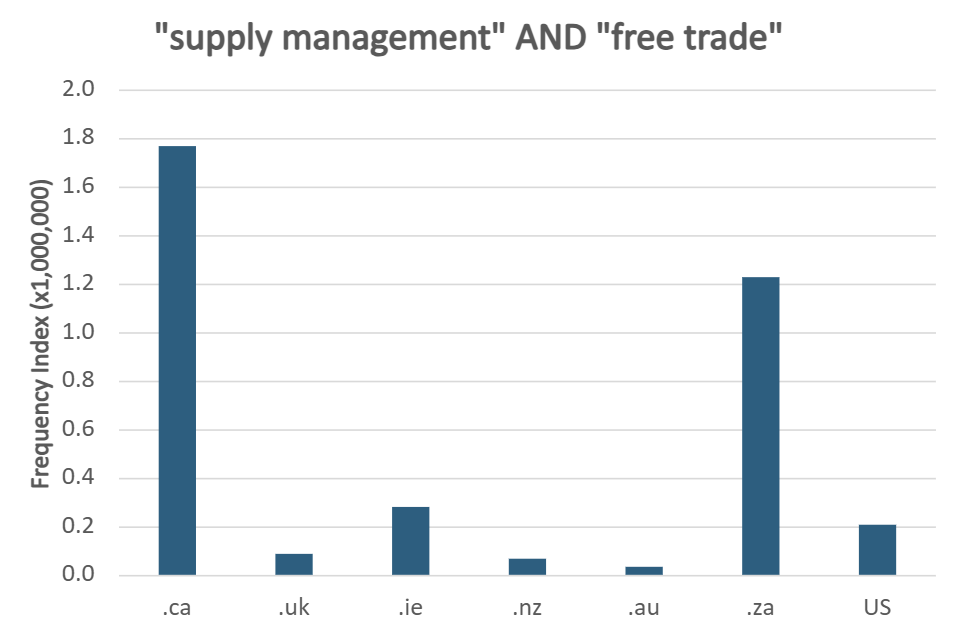Quick links
supply management
DCHP-3 (Apr 2025)
n. — Agriculture, Economy, Interprovincial relations
a management system under which agricultural products are not exposed to free market forces.
Type: 4. Culturally Significant — As of the late 1960s and the 1970s (see quotations), Canadian agricultural producers worked out a supply-and-demand management system that is today in place for dairy, broiler chickens, laying hens, turkeys and hatching eggs across Canada. It limits import and inter-provincial trade in these food stocks to ensure a high quality, local food supply (see the National Farmers Union resource). In free trade negotiations, Canada's supply management has been a bone of contention (see, e.g., the CUSMA quotation from 2024).
The measure has come to be associated with a Canadian approach beyond the free market economy and is, in the context of US principles extended to food stocks, often seen as culturally salient (see the 2025 quotation).
The term in the agricultural context, however, is a Preservation from US use, as Senator J. F. Kennedy proposed supply management for the Midwestern farmers in a 22 Sep. 1960 campaign talk at Sioux Falls (see the 1960 quotation).
Chart 1 shows that the term -- narrowed down to "free trade" contexts, is highly frequent in Canada, especially in comparison with the US. This differential highlights a difference in public discourse in the neighbouring countries a trading partners.
The measure has come to be associated with a Canadian approach beyond the free market economy and is, in the context of US principles extended to food stocks, often seen as culturally salient (see the 2025 quotation).
The term in the agricultural context, however, is a Preservation from US use, as Senator J. F. Kennedy proposed supply management for the Midwestern farmers in a 22 Sep. 1960 campaign talk at Sioux Falls (see the 1960 quotation).
Chart 1 shows that the term -- narrowed down to "free trade" contexts, is highly frequent in Canada, especially in comparison with the US. This differential highlights a difference in public discourse in the neighbouring countries a trading partners.
Quotations
1960
[In his first major bid for the Midwest farm vote, the Democratic presidential candidate turned to supply management to achieve his income goal for farmers.]
1969
Paul Babey, president of the Farmers Union of Alberta, said some form of supply management is necessary. By this collective bargaining, farmers could ask a price rather than take what is given.
1975
If the experiment works, other products such as pork can be expected to come under supply management programs.
1976
Beef not ready for supply management Incentive programs will eventually lead to supply management -- unless the US is willing to take all our surplus beef. The beef industry isn't ready for supply management yet -- mainly because no one can comprehend how it would operate successfully and, of course, because we are free enterprisers.
1989
During the election of 1988 you stated quite clearly that supply management and its underpinnings would stay intact for the dairy industry.
2007
"Supply management" should be named "supply strangulation." In the 1970s, after a series of interprovincial spats -- how Canadian! - - over "cross-border" (within Canada!) movements of chickens and eggs, our governments set up marketing boards to regulate supplies.
2024
Over the last three years we have followed Canada’s ongoing battle to protect and reserve it supply management system for dairy and poultry products in place and negotiated for since the original GATT negotiations concluded in 1947.
References
- National Farmer Union • Supply management
Images
